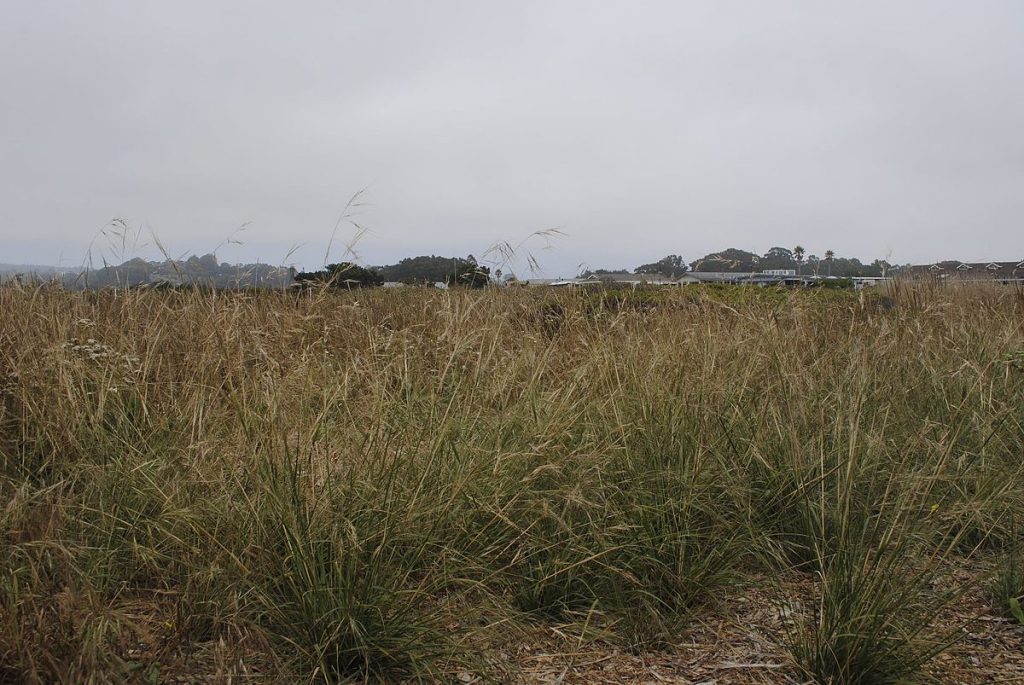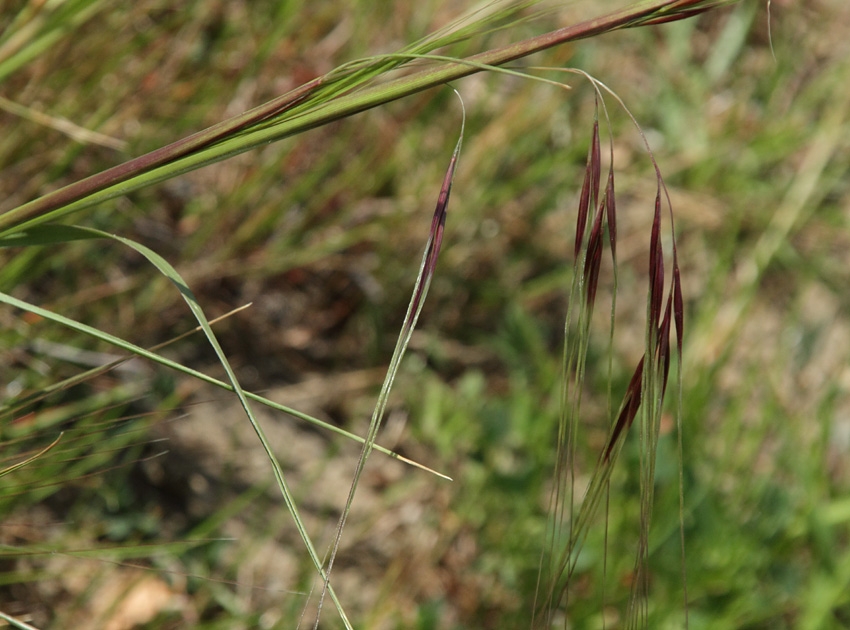
This perennial bunch grass is native to California where it grows in a variety of habitats including grassland, chaparral and oak woodland. It is a member of the grass family Poaceae, that also includes rice, corn and bamboo. The plants grow up to 3.3′ tall and form dense tussocks of erect, unbranched stems with linear green leaves that are smooth to finely hairy. In early to mid summer, flowers are produced in open, nodding clusters 4-8″ long and consisting of many branches bearing spikelets. The seed florets are .3-.4″ long and have a hairy lemma and a twice-bent awns that are 1.5-4″ long, and are purple at first, turning to light wheat color with maturity. Each plant yields an abundance of seed before going dormant until the rains return. The root system can be up to 20′ deep in the soil making the plant very drought tolerant and a good choice for erosion control or a xeriscape where it can be used for a ground cover or combined with other drought tolerant plants to make a meadow or prairie garden. Purple needle grass provides food and/or shelter to butterflies, birds, and mammals, including elk and deer, but is generally not used as forage for livestock. The genus name, Stipa, is from the ancient Greek word στύππη (stúppē) meaning fiber. The specific epithet, pulchra, is the Latin word meaning beautiful. Photo Credit oliveoligarchy Wikimedia Commons

Type: Perennial bunch grass
Bloom: Open, nodding clusters 4-8″ long of small purple flowers in early to mid summer.
Size: 2-3.3′ H x 18-30″ W; tolerates clay, serpentine and sodic soil
Light: Full sun to partial shade
Soil: Average, dry, well-drained; tolerates drought and low fertility
Hardiness: Zones 7-11
Care: Heat and drought tolerant and requires no summer water
Pests and Diseases: None of significance
Propagation: Seed (plants tend to self-seed)
Companion Plants: Seaside daisy, bush monkey-flower, black sage, California buckwheat
Outstanding Selections: None
Photo Credit: Wikimedia Commons